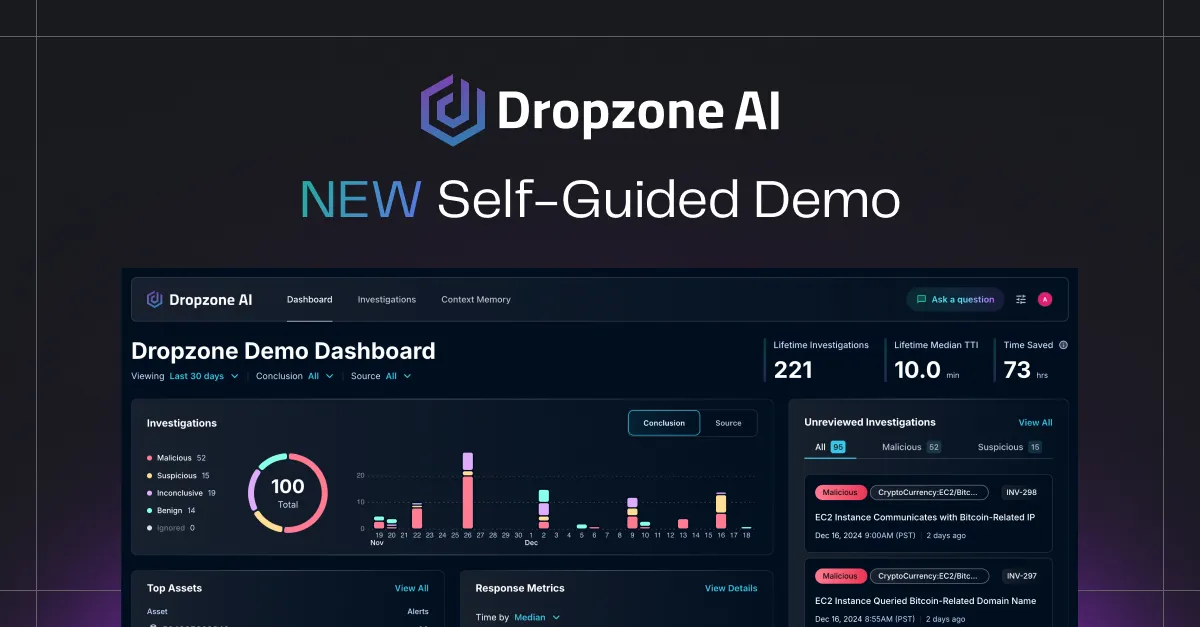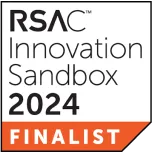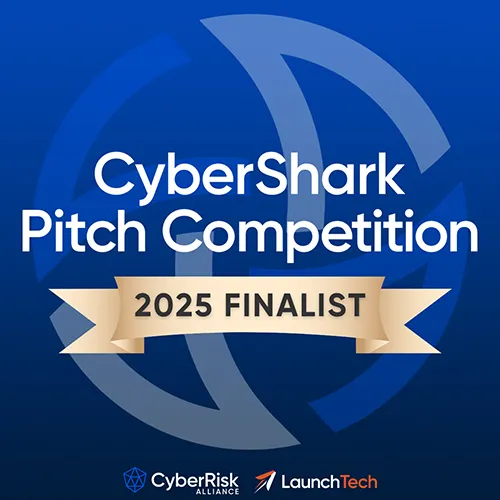What is Alert Triage?
Alert triage is the process of evaluating, prioritizing, and investigating security alerts to identify real threats. It involves:
- Grouping related alerts to see the full attack story
- Gathering context about affected systems and users
- Scoring risk levels based on business impact
- Following proven investigation paths
- Making clear disposition decisions
- Completing alert investigations in under 10 minutes per alert cluster
Why Security Teams Can't Keep Up With Alerts
According to industry research, most SOCs can only thoroughly investigate about 22% of their daily alerts, leaving 78% uninvestigated. The rest either get ignored, auto-closed, or receive cursory reviews that miss critical indicators. This creates a dangerous blind spot where real threats hide among the noise, leading to breach lifecycles that stretch over 200 days and cost organizations millions.
This guide provides practical frameworks and proven techniques for transforming alert triage from a bottleneck into a competitive advantage. You'll learn the exact methods that leading security teams use to investigate alerts in minutes rather than hours, while AI SOC analysts are revolutionizing how teams achieve complete coverage without burning out their staff.
Who This Guide Is For:
- SOC managers battling alert fatigue and team burnout
- Security analysts seeking faster investigation techniques
- CISOs needing to optimize security operations efficiency
- MSSPs looking to scale without proportional headcount increases
Why Are SOCs Drowning in Alerts?
The Alert Overload Crisis
Picture this: Your SOC operates 24/7, yet most of your processes are still manual. Your team spends 30 minutes investigating each false positive, and nearly half of all incoming data gets dumped into the SIEM without any plan for actually using it. Sound familiar?
This disconnect between expectations and reality creates a vicious cycle. According to IBM's 2025 Cost of a Data Breach Report, the average breach now costs $4.44 million and takes 241 days to identify and contain. Meanwhile, the majority of organizations report their teams are overwhelmed, with retention becoming a critical issue as analysts burn out from the relentless pace.
Where Traditional Triage Falls Short
Traditional alert triage treats each signal as an isolated event, missing the bigger picture of coordinated attacks. When your team can only investigate a fraction of alerts thoroughly, patterns go unnoticed and threats slip through.
The problem gets worse when organizations deploy new tools without proper tuning. Many teams use AI and ML capabilities straight out of the box, missing the opportunity to customize these systems to their specific environment. The result? More false positives, more noise, and more frustrated analysts.
Adding to the challenge, institutional knowledge constantly walks out the door with typical SOC tenure lasting just 3-5 years according to the SANS 2025 SOC Survey. Each time an experienced analyst leaves, the team loses crucial understanding of what's normal versus threatening in your specific environment.
How Do You Triage Alerts Faster?
The 5-Step Rapid Triage Framework
Modern alert triage requires a systematic approach that balances speed with accuracy. This framework transforms chaotic alert queues into manageable workflows that any analyst can follow.
How to Triage Security Alerts in 5 Steps:
- Smart Alert Grouping (1 minute) - Cluster related signals by time windows, affected systems, or similar techniques to understand whether you're seeing coordinated activity or isolated events
- Instant Context Gathering (2 minutes) - Check system criticality, verify if user typically performs these actions, review recent changes, and match against known threat campaigns
- Risk-Based Priority Scoring (1 minute) - Evaluate business impact potential, lateral movement possibilities, sensitive data exposure, and exploit availability
- Focused Investigation Path (5 minutes) - Follow proven investigation paths based on alert type (authentication, network anomalies, or endpoint alerts)
- Clear Decision and Documentation (1 minute) - Make disposition as critical threat, policy violation, false positive, or benign activity with proper documentation
Step 1: Smart Alert Grouping (1 minute)
Stop investigating alerts one by one. Instead, cluster related signals to see the full attack story. Group by time windows, affected systems, or similar techniques to understand whether you're seeing coordinated activity or isolated events.
Step 2: Instant Context Gathering (2 minutes)
Context is everything in security alert investigation. For each alert cluster, quickly gather:
- Is this a critical production system or a test environment?
- Does this user typically perform these actions?
- Were there recent changes that could explain this behavior?
- Do these indicators match any known threat campaigns?
Step 3: Risk-Based Priority Scoring (1 minute)
Not all alerts deserve equal attention. Prioritize based on actual risk to your organization, considering business impact potential, lateral movement possibilities, sensitive data exposure, and whether exploits are available in the wild.
Step 4: Focused Investigation Path (5 minutes)
Follow proven investigation paths based on alert type:
- Authentication alerts: Verify MFA usage, check IP reputation, review session activity
- Network anomalies: Analyze traffic patterns, check destination reputation, measure data volume
- Endpoint alerts: Validate process legitimacy, examine parent-child relationships, review file changes
Step 5: Clear Decision and Documentation (1 minute)
Make a clear disposition with one of four outcomes:
- Critical threat: Immediate escalation and containment
- Policy violation: Create ticket for remediation
- False positive: Document cause and tune detection
- Benign activity: Update baseline expectations
This 10-minute process replaces lengthy manual investigations, enabling teams to handle significantly more alerts without sacrificing quality.
Which Platforms Work Best for Alert Triage?
Optimizing Your Existing Security Stack
While every platform has unique features, the investigation principles remain consistent. Here's how to maximize the major platforms most SOCs already use:
Splunk Enterprise Security Splunk excels at statistical analysis and pattern detection across massive datasets. Focus on building saved searches for common investigations, leveraging data models for speed, and creating dashboards that surface anomalies automatically. The key is moving beyond basic searches to correlation rules that connect related events.
Microsoft Sentinel Sentinel's cloud-native architecture provides unique advantages for organizations using Azure. Take advantage of built-in machine learning models, automated investigation features, and seamless integration with Microsoft's security suite. The platform's workbooks enable visual investigation flows that speed up analysis.
QRadar IBM's QRadar strength lies in its offense management system that automatically groups related events. Build reference sets of known good and bad indicators, use the magnitude scoring to prioritize investigations, and leverage custom rules for your environment's specific threats.
CrowdStrike Falcon Falcon's EDR capabilities shine when you use its threat graph to understand attack progression. The platform's managed threat hunting and automated detection reduce the investigation burden, while cloud-native architecture ensures you're always using the latest threat intelligence.
Each platform can support rapid triage when properly configured, but the key is standardizing your investigation process regardless of which tool generates the alert.
Should You Automate Alert Triage?
The Automation Hierarchy
Not everything should be automated, but knowing what to automate versus what requires human judgment is crucial for maintaining both efficiency and security.
Fully Automate These Tasks:
- Reputation lookups for IPs, domains, and file hashes
- Geographic and network enrichment
- Deduplication of redundant alerts
- Suppression of confirmed false positives
- Basic ticket creation with context
Semi-Automate With Human Validation:
- Risk scoring and initial prioritization
- First-pass investigation steps
- Containment recommendations
- Complex event correlation
Always Keep Human-Driven:
- Final incident declaration
- Business impact assessment
- Novel or sophisticated threats
- Communication with stakeholders
How AI SOC Analysts Transform Triage
Modern AI SOC agents go beyond simple automation to fundamentally change how teams operate. According to IBM's research, organizations using AI-powered security see dramatic improvements: nearly $2 million in reduced breach costs and 80 days faster response times.
An AI SOC analyst doesn't just follow playbooks; it reasons through investigations like an experienced human analyst would. For example, Dropzone AI investigates alerts in 3-10 minutes compared to the 30-40 minutes required for manual investigation. More importantly, these AI agents can work continuously, investigating 100% of alerts rather than the 22% industry average.
The key difference between traditional automation and AI SOC agents is adaptability. While SOAR platforms need predefined playbooks for every scenario, AI analysts adapt to each unique alert, learning from your environment to improve accuracy over time. This means no complex setup, no constant playbook maintenance, and no gaps when facing novel threats.
How Do You Measure Triage Success?
Understanding Mean Time to Conclusion (MTTC)
Traditional metrics only tell part of the story. That's why Dropzone AI coined Mean Time to Conclusion (MTTC), a comprehensive metric that captures the entire investigation lifecycle from detection through final disposition.
MTTC includes three critical components:
- Time to detect the threat
- Time to acknowledge and begin investigation
- Time to investigate and reach a conclusion
Industry data shows the average MTTC stretches to 241 days (IBM 2025), but leading organizations using AI-powered triage compress this to hours or even minutes. This dramatic reduction directly correlates with lower breach costs and reduced business impact.
Key Metrics That Matter
Track these indicators to measure your triage effectiveness:
Calculating Your ROI
To understand the value of improving your triage process, consider both time savings and risk reduction. Organizations with AI-enhanced security operations save an average of $1.9 million per breach through faster threat identification and containment.
Calculate your potential savings by considering:
- Current investigation time versus improved time with automation
- Number of alerts your team handles annually
- The cost of analyst time spent on repetitive tasks
- Risk reduction from faster threat detection
Even modest improvements yield significant returns when multiplied across thousands of annual alerts.
Common Pitfalls and Your 30-Day Transformation
Top 5 Alert Triage Mistakes
- Alert Hoarding: Keeping alerts "just in case" instead of making clear decisions
- Context Blindness: Investigating without understanding your environment
- Tool Overload: Too many disconnected platforms creating friction
- Severity Tunnel Vision: Only investigating "critical" alerts while threats hide in medium/low
- Knowledge Gaps: Not documenting decisions for future reference
Your 30-Day Quick Win Plan
Week 1: Baseline and Foundation
- Measure current investigation times and coverage
- Document your top 5 false positive sources
- Create investigation checklists for your 3 most common alert types
- Identify quick wins for Week 2
Week 2: Easy Wins and Planning
- Implement basic deduplication rules for top false positives
- Document the 5-step triage framework for team review
- Begin collecting metrics for baseline MTTC
- Schedule team training sessions for Week 3
Week 3: Process Introduction
- Train team on the 5-step triage framework (2-3 sessions)
- Start using investigation checklists in daily operations
- Implement one simple automation (e.g., IP reputation lookups)
- Continue tracking metrics and gathering feedback
Week 4: Refinement and Next Steps
- Review metrics and team feedback from framework adoption
- Document lessons learned and process adjustments
- Create 60-day roadmap for deeper improvements
- Schedule demos with AI SOC analyst vendors if appropriate
What Happens Next (Days 31-60):
- Build comprehensive context enrichment workflows
- Deploy automated enrichment across more data sources
- Implement risk-based prioritization scoring
- Create platform-specific saved searches and dashboards
- Begin pilot of AI SOC analyst solution if selected
The Path Forward
Alert triage remains the biggest bottleneck in security operations, but it's also where you can achieve the most dramatic improvements. Organizations modernizing their triage see 90% faster investigations, complete alert coverage, and significantly reduced breach risk.
Success starts with a solid framework, platform optimization, and strategic automation. Even basic improvements from Week 1 can reduce your backlog and give your team breathing room for deeper enhancements.
For organizations ready to accelerate transformation, AI SOC analysts like Dropzone AI compress months of optimization into days. These systems deliver thorough investigations in minutes without requiring complex setup or maintenance, allowing your human analysts to focus on strategic security initiatives.
Your Next Steps:
- Calculate your current MTTC baseline
- Implement the 5-step triage framework
- Deploy quick wins from the 30-day plan
- Evaluate how AI SOC agents could help achieve 90% improvement
See how Dropzone AI's autonomous alert triage helps security teams investigate every alert in minutes, not hours. Start your free trial of Dropzone AI →









